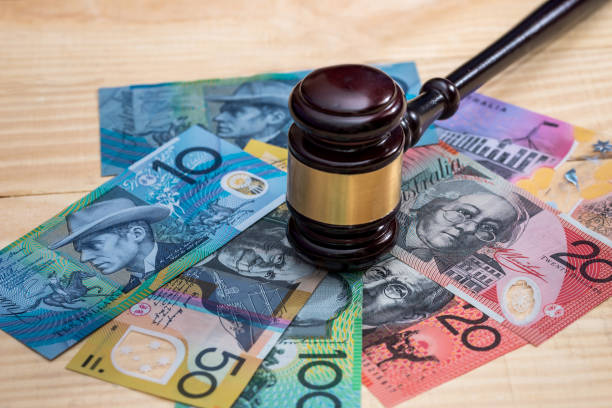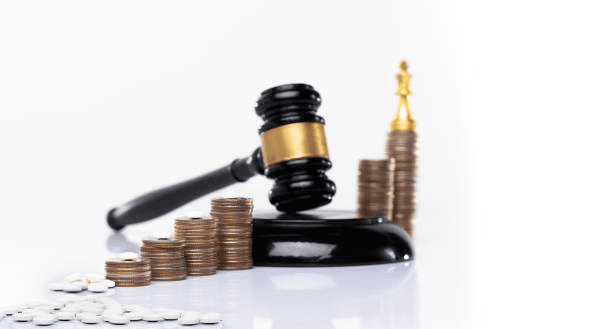A sequestration order is a court order that freezes the assets of a person who is in debt. This means that the person cannot sell, transfer, or otherwise deal with their assets without the court’s permission.
The court typically grants sequestration orders when a creditor believes that a debtor is about to dispose of their assets in order to avoid paying their debts. The intention of the order is to protect the creditor’s interests and ensure that they are able to recover the money that the debtor owes them.
In Australia, the Bankruptcy Act 1966 governs sequestration orders. Specifically, Section 43 of the Bankruptcy Act governs the making of sequestration orders. If you face financial difficulties, speaking to a lawyer about what you can do in case the court issues this type of order is the smartest choice.
A lawyer can definitely help you understand your options to get the best possible outcome and protect your rights as a business owner or as a creditor.
What Is a Sequestration Order?
A sequestration order is a court order that declares a person bankrupt. The court hands down the order and makes the debtor bankrupt, and a trustee manages their assets. There are several grounds for requesting a review of a sequestration order. Common reasons include:
- The debt is not owing and/or a set-off exists
- An act of bankruptcy has not been committed
- The act of bankruptcy relied on by the creditor is deficient
- The debtor is actually solvent and able to pay the debt.
A creditor’s petition is submitted to the court, and if the court makes the debtor bankrupt, the court’s order is called a sequestration order. Once the court issues this order, the debtor is considered bankrupt, and it’s important to seek advice and understand the consequences.
A trustee who takes control of the bankrupt’s assets will manage the bankrupt’s estate. The Federal Court or Federal Circuit Court makes a sequestration order. Once received, the assets of the bankrupt are handed over to be managed by a trustee.
Process and Application
If you are a petitioning creditor in Australia and want to apply for a sequestration order, you can follow these steps:
1. File a creditor’s petition in either the Federal Circuit and Family Court or the Federal Court. The petition should rely upon the debtor’s failure to comply with a bankruptcy notice as the act of bankruptcy. There are three conditions that the creditor must comply with before filing a petition:
- The creditor must be owed an amount of AUD$10,000 or more,
- The amount(s) owed is a liquidated sum and is payable immediately or at a certain future time, and
- An “act of bankruptcy” has been committed by the debtor within six months before the presentation of the creditor’s petition.
Most creditors petitions filed in the court are heard by a Registrar. The decision of a Registrar can be reviewed by a judge of the court if either party asks for this to happen.
2. If the court makes the debtor bankrupt, the court issues the sequestration order.
3. Once the court issues the order, the debtor is considered bankrupt, and a trustee manages their assets.
4. If you want to apply for a review of the order, you can apply to the court within 21 days of the order.
5. Before starting a review application, see Form B12: Notice to creditors of application for review of Registrar’s decision to make sequestration order.
Important : If you apply for a review of the order you must still lodge your bankruptcy form. You should comply with your obligations as a bankrupt person, until the court makes a final decision during the hearing date.

Factors Considered by the Court
When deciding to issue the order, the court in Australia considers various factors, including:
- The evidence presented before the court.
- Whether the debtor has committed an act of bankruptcy.
- Whether the debtor has failed to comply with a bankruptcy notice.
- Whether the debtor has committed an act of bankruptcy within the last six months.
- Whether the debtor has made any transfers of property or other assets that may be considered voidable transactions.
- Whether the debtor has any dependents or other special circumstances that may affect the decision.
If the court is satisfied that the debtor has committed an act of bankruptcy, it may make a sequestration order, which declares the debtor bankrupt and hands over their assets to a trustee. It’s important to note that bankruptcy has serious consequences, and it’s important to seek advice before applying for a sequestration order or presenting a creditor’s petition.
Consequences of a Sequestration Order
The consequences of a sequestration order in Australia are as follows:
1. Appointment of an official trustee or a registered private trustee. When the court makes the order, a trustee is appointed to manage the financial affairs of the bankrupt. The trustee takes control of the bankrupt’s estate, which includes their assets and liabilities. What if the order does not note the name of the trustee? The trustee will be the Official Trustee in Bankruptcy that the Australian Financial Security Authority is administers.
2. Loss of control over assets. The bankrupt loses control over their assets once the order is in place. Moreover, the trustee can sell or distribute the assets to repay the creditors.
3. Restrictions on financial activities. The bankrupt is subject to various restrictions on their financial activities. They may only be able to obtain credit above a certain limit if they disclose their bankruptcy status. They may also face limitations on traveling overseas.
4. Impact on business ownership. For small business owners, this order can have significant implications. It may result in the closure or sale of the business, as the trustee may take control of the business assets.
5. Credit rating and future financial prospects. Bankruptcy harms the bankrupt’s credit rating, making it difficult to obtain credit in the future. It may also affect their ability to secure employment or engage in certain professions.
6. Potential discharge from bankruptcy. While bankruptcy imposes significant consequences, it is not a permanent state. The bankrupt may be eligible for discharge from bankruptcy after a certain period, typically three years.
This order can have long-lasting effects on an individual’s financial and personal life. Seeking professional advice and understanding the implications is crucial for anyone facing bankruptcy.

How Can a Business Lawyer Help?
A business lawyer can provide valuable assistance with sequestration orders. Our lawyers at JB Solicitors can provide expert legal advice on matters related to business law, including bankruptcy and creditor’s rights. They can explain its implications for you and your business, the process involved, and the rights and obligations of the parties involved.
We advocate for the best possible outcome, negotiate with creditors, and explore alternatives to bankruptcy, such as debt restructuring or voluntary arrangements. Contact us today.
